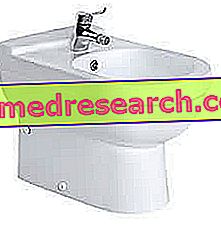Related articles: Arthrosis
Definition
Osteoarthritis is a chronic disease characterized by the progressive destruction and loss of articular cartilage. Over time, the degenerative process extends from the cartilage to the entire joint, causing further typical manifestations, including bone hypertrophy and osteophytosis.
Osteoarthritis can be favored by several factors. First of all, the damage to the joints is somehow linked to the excessive use of the same. In fact, osteoarthritis is typical of elderly people, although it can appear even at an earlier age favored by trauma, postural abnormalities and continuous use of some joints. In other cases, osteoarthritis results from disorders that alter the normal structure and function of cartilage (eg rheumatoid arthritis, gout etc.), from endocrine-metabolic diseases or from infections. Even overweight and obesity subject the joints to excessive stress and can therefore favor the onset of osteoarthritis.
Most common symptoms and signs *
- Ankylosis
- Muscular atrophy and paralysis
- Muscular atrophy
- Swollen ankles
- coxalgia
- cruralgia
- Coccyx pain
- Knee pain
- Elbow pain
- Foot pain
- Heel pain
- Hip pain
- Groin pain
- Pain in the Stomach Mouth
- Jaw pain
- Hand and wrist pain
- Shoulder pain
- Arm pain
- Bone pain
- Pain associated with chewing
- Back pain
- Facial pain
- Articolar pains
- Muscle pains
- haemarthrosis
- heartburn
- Muscular collation
- Joint swelling
- hyperlordosis
- Muscular hypotrophy
- macrocephaly
- Backache
- Metatarsalgia
- Nodule
- onychogryphosis
- osteophytes
- Rheumatism
- Joint stiffness
- Articular noises
- Sciatica
- Bone Sclerosis
- Spinal stenosis
- Bone swelling
- Articular Pouring
Further indications
Osteoarthritis is characterized by the presence of a dull and deep joint pain, initially mild but gradually worsening over the years. The pain is aggravated or triggered by efforts that affect the affected joint and disappears with rest; however, with the evolution of the disease it tends to become a constant disorder. Furthermore, arthrosis causes joint stiffness, which typically arises upon waking up or after a period of inactivity and lasts less than 30 minutes. The bony heads, in fact, are no longer protected by the cartilage and can make friction on each other increasing the difficulties in the movements. As the osteoarthritis progresses, swelling, throats or joint crackles and a further limitation of the movements arise. In the more advanced stages, pain can also be present at rest and hinder sleep at night; deformities, subluxations and bony growths, called osteophytes, may also develop, located at the edges of the affected joint.
Osteoarthritis can affect any joint, even if it tends to be located in the areas most stressed by body weight and daily activities: knee, hip, shoulders, hands and spine. The diagnosis is established through a medical examination and confirmed by radiological investigations, which highlight a reduction in joint space due to the disappearance of cartilage tissue.
Arthrosis is unfortunately irreversible, since the damaged cartilage is not able to spontaneously regenerate. Furthermore, there is still no truly conclusive therapy. However, physical measures (including rehabilitation) and a series of pharmacological and surgical treatments, including innovative ones (chondrocyte transplantation and growth factors), can relieve pain and improve the functions of the affected joint.



